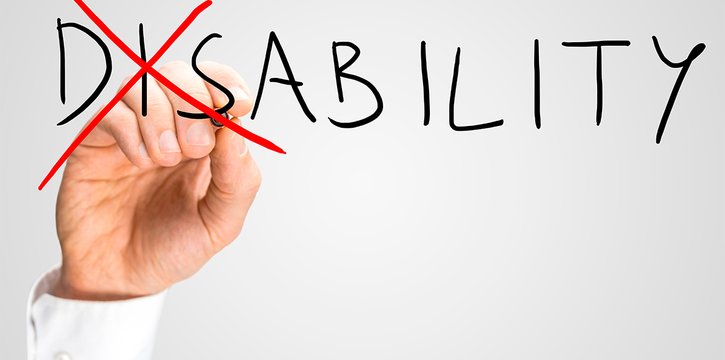
Premed students with disabilities often receive misinformation about their competitiveness and candidacy for medical school. Misconceptions about the requirements and associated barriers are often at the core of prevailing myths. While public campaigns like the University of Michigan’s #DocsWithDisabilities on Twitter are working to change public perception of health care providers with disabilities, there is still progress to be made. To help dispel these myths, we asked Lisa M. Meeks, PhD, disability researcher at University of Michigan Medical School, about the most common misconceptions and what aspiring physicians should know. Here’s what she shared:
Myth #1: Most students preparing to take the MCAT® exam will not be approved for accommodations on the exam, and if accommodated, their scores will be flagged, identifying them as a student with a disability.
Fortunately, this is false. The AAMC is committed to providing all individuals with an opportunity to demonstrate their proficiency on the MCAT® exam, which includes ensuring access for people with disabilities.
Like most standardized tests, the MCAT program does require the submission of specific documentation to determine accommodation needs, which is considered through the review process. However, if students follow the AAMC’s guidelines and present documentation that supports their need for accommodation, they have a reasonable likelihood of approval. Flagging, or the act of placing an asterisk on students’ examination results indicating that they tested with accommodations, is no longer practiced.
Myth #2: Applicants with disabilities interested in medical school are almost never admitted.
This belief contradicts the evidence that nationally, almost 3%* of medical students disclose disabilities. While students with disabilities are still underrepresented, the AAMC is sharing stories of current students with both visible and invisible disabilities, like Jeff Mahlum, a wheelchair user, and Emily Hayward, who battled viral encephalitis. These stories highlight that students with disabilities can be admitted to and successful in medical school.
Myth #3: Students with disabilities will not be eligible for accommodations in the clinical years of their program.
Counter to this myth, reasonable accommodations are regularly administered in the clinical portion of medical school. This also extends to employment, with doctors regularly receiving accommodations in residency and in the workplace. The AAMC hosted a webinar to assist medical schools with determining and implementing clinical accommodations.
Myth #4: Students with disabilities cannot fulfill the rigorous requirements or handle the intensity of medical school programs.
Many believe that medical schools water down the curriculum or waive competencies in order to graduate students with disabilities. This is incorrect. Students with disabilities must master the same academic and clinical requirements as their nondisabled peers. While students with disabilities have no more or less ability to handle the intensity of the programs, they must feel safe disclosing disability and seeking reasonable accommodations so that they have an equal opportunity to engage in the medical school experience.
Myth #5: Students with disabilities pose a risk to patient safety.
Patient safety is paramount when training medical students. Concerns about safety, however, cannot stem from presumptions or beliefs grounded in stereotypes or fear, but rather must stem from an observed action (or lack of action). They must be reasonable, legitimate, and well-informed. Safety procedures, and the associated policies and protocols, should be in place for all students. There is no evidence that students with disabilities present an increased risk for patient safety; in fact, students with disabilities are often more conscientious, developing an additional personal system of checks and balances with regard to patient care.
We hope that clearing up these misconceptions will help broaden and strengthen the pipeline of future physicians. For further reading, we encourage you to check out the AAMC’s report on this topic, Accessibility, Inclusion, and Action in Medical Education Lived Experiences of Learners and Physicians With Disabilities. Be sure to follow the hashtag #DocsWithDisabilities and Lisa Meeks @meekslisa on Twitter for the most up to date information about disability inclusion in medicine.
* Meeks, L. M., & Herzer, K. R. (2016). Prevalence of self-disclosed disability among medical students in US allopathic medical schools. JAMA, 316(21), 2271-2272.